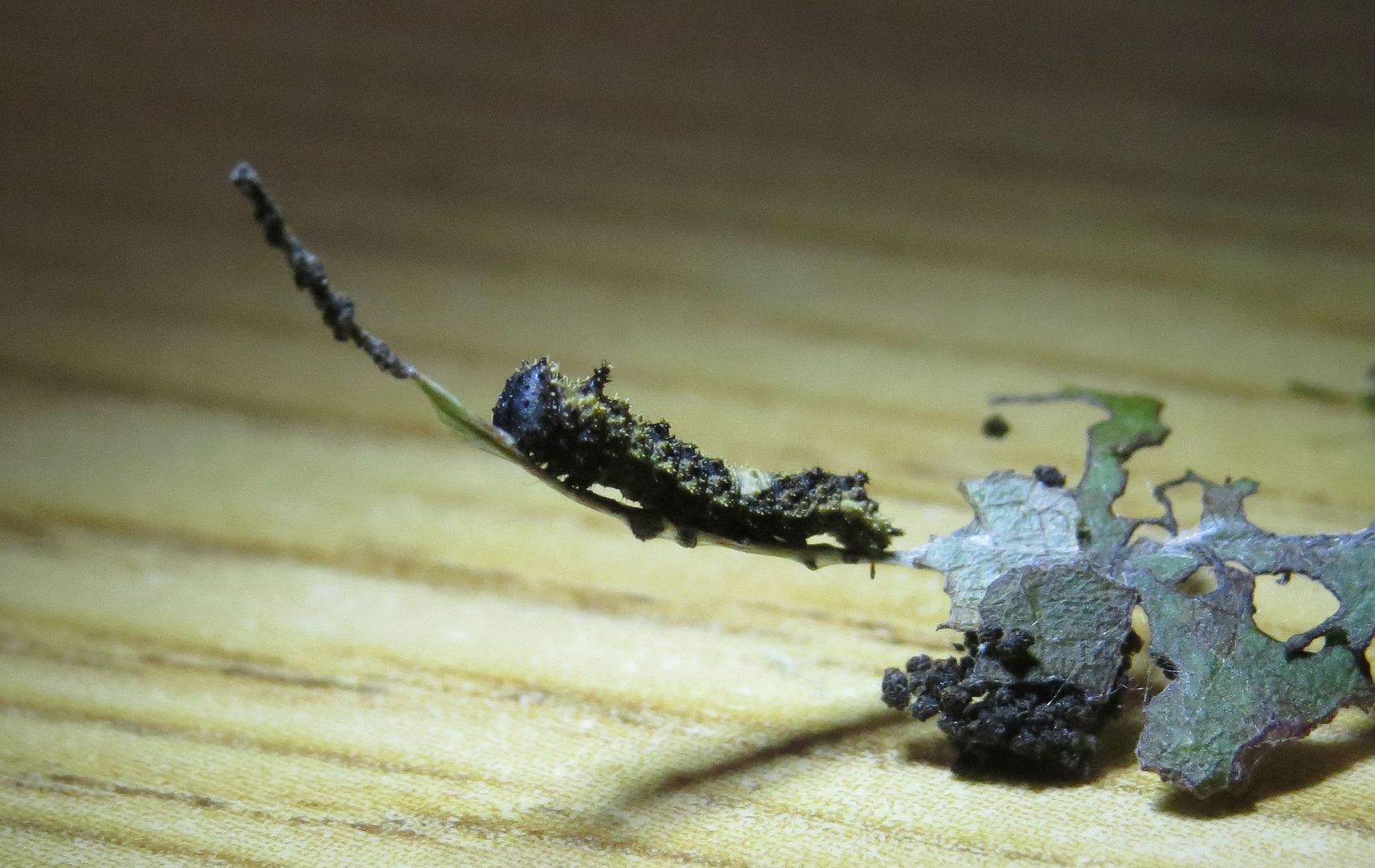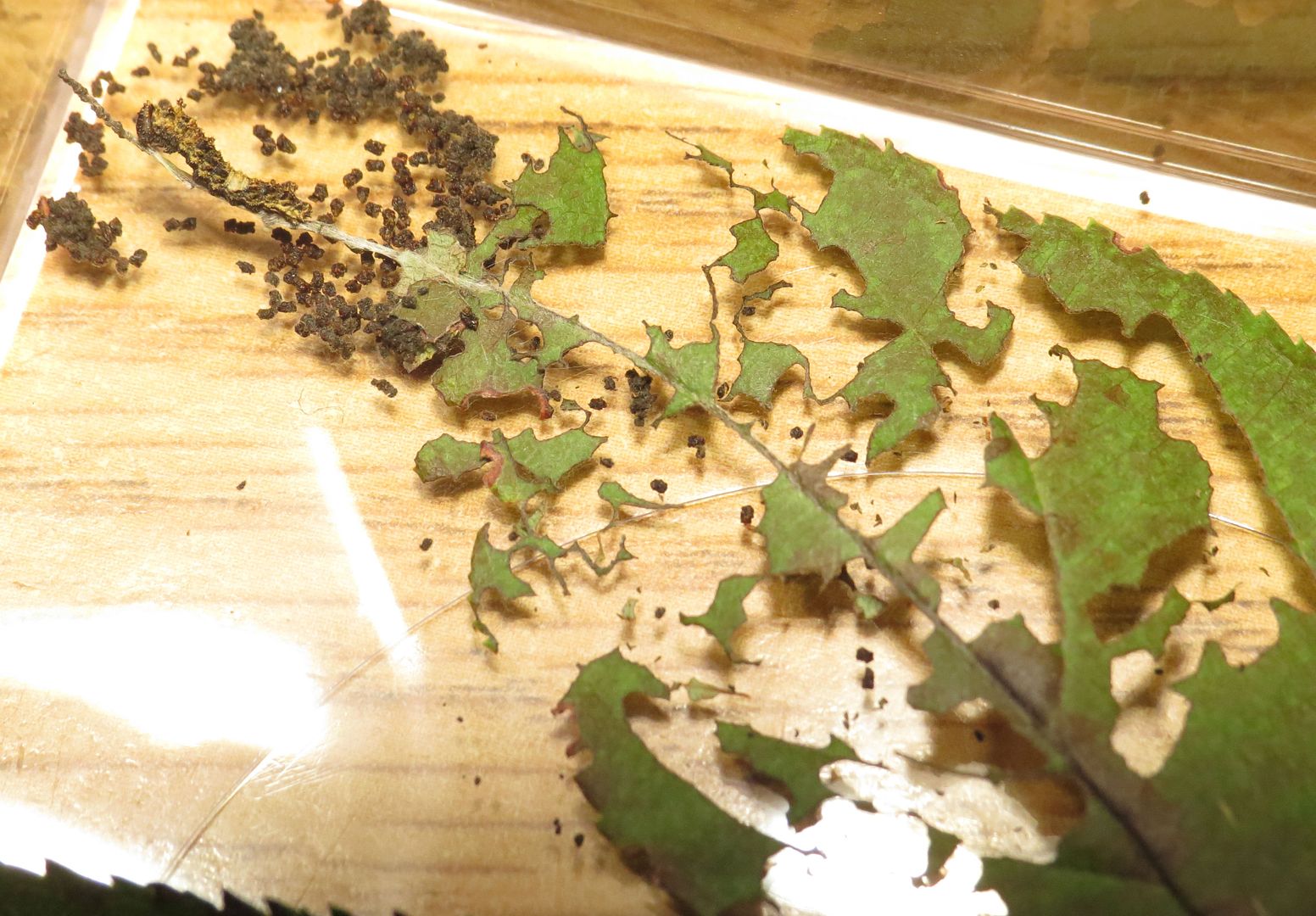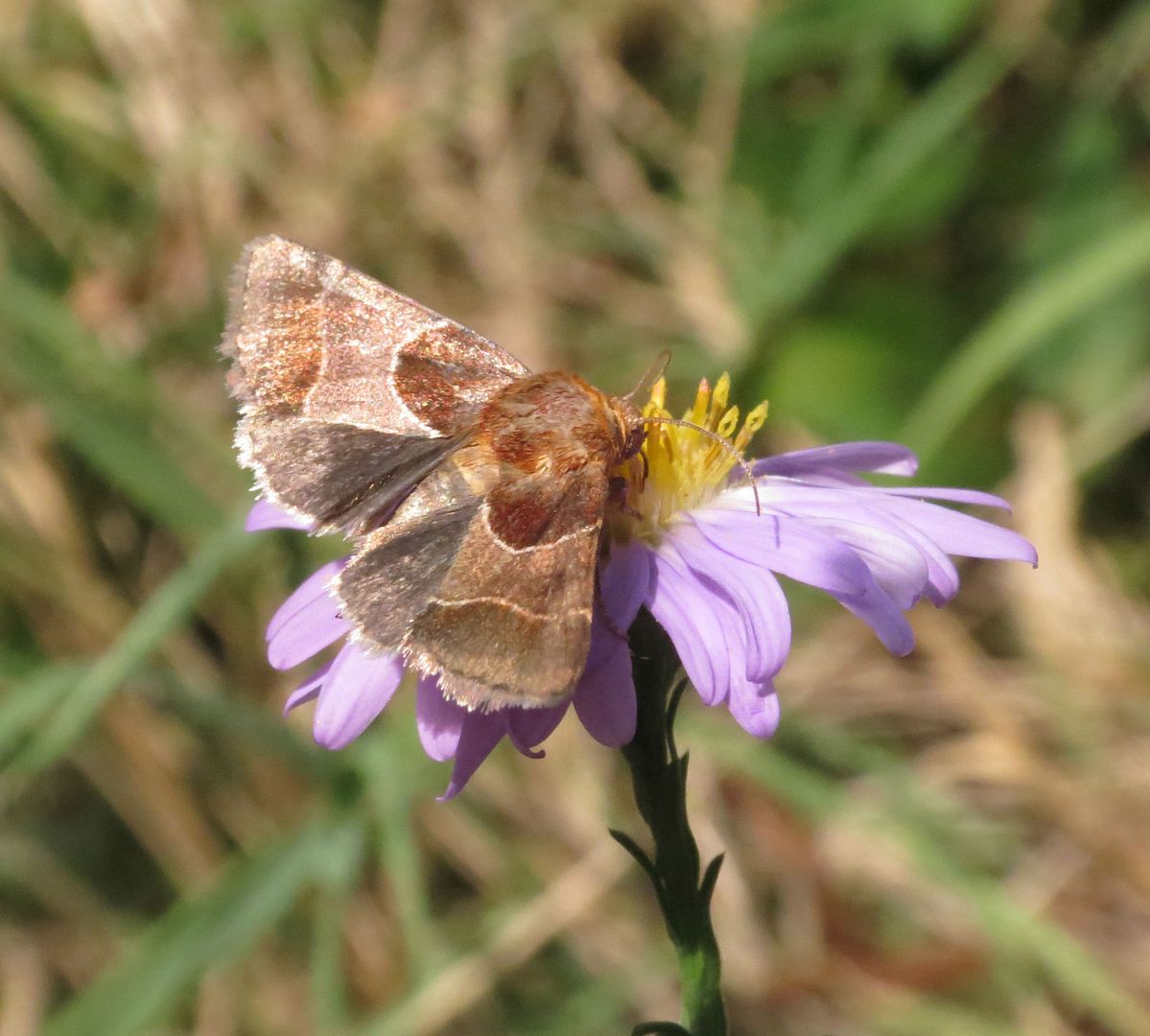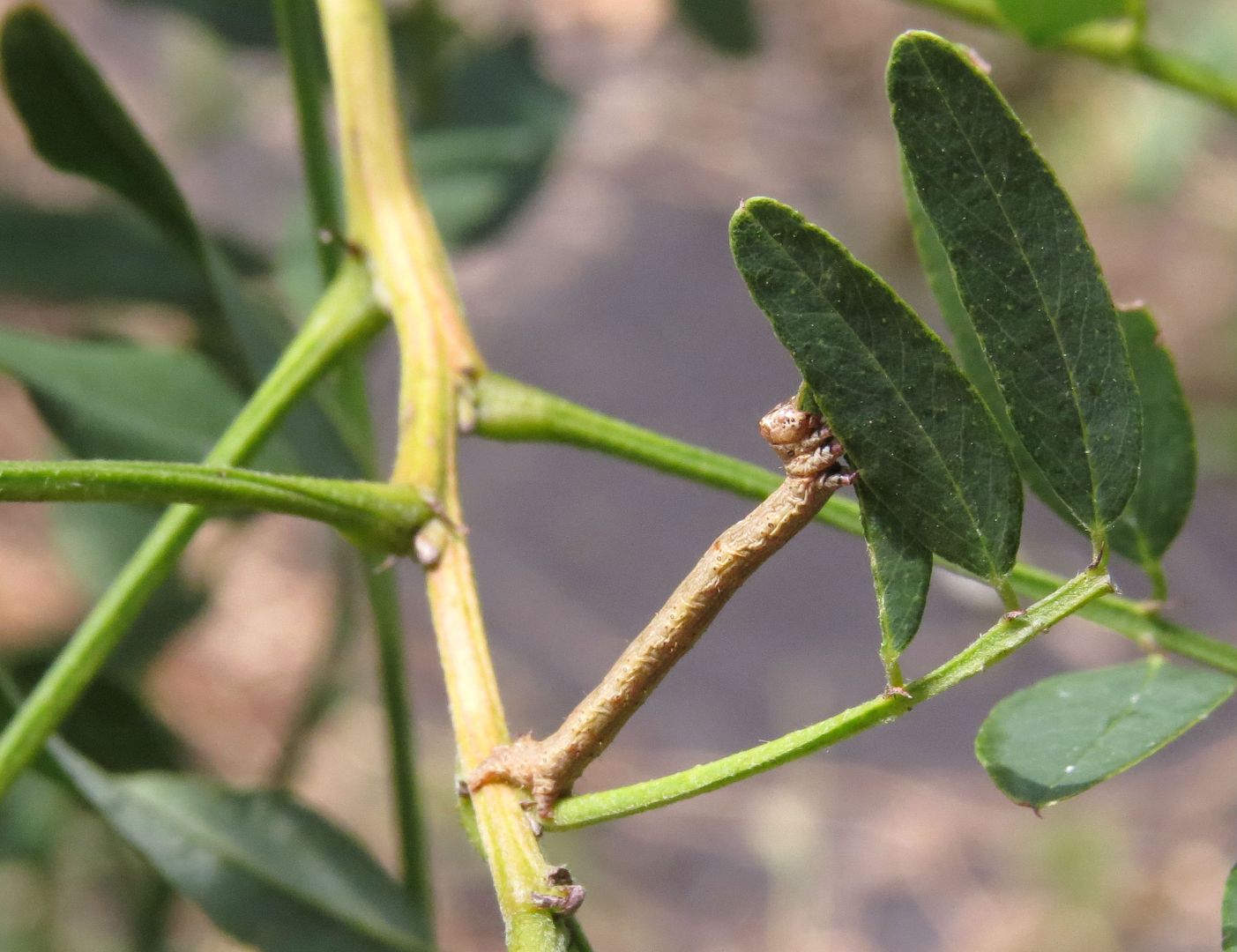Also happening with Caterpillars this autumn, I'm attempting to raise a
Red Spotted Purple or two. I eyed a female out in the yard laying eggs,
curiously on two nonnatives, which the caterpillars seem to be eating. A
Snowdrift Crab Apple but they're in the genus Malus so I'm doubt native
or not really matters in that case. The other was a Japanese Weeping
Cherry, but that's also a Prunus so maybe that doesn't matter as much?
Still though I don't see Tiger Swallowtails or Silk Moths laying on the
tree so I'm sure the native Black Cherry is the superior host plant. In
the short amount of time I've had the sapling Black Cherry I can say
I've already found way more caterpillars on it than the ornamental
Weeping Cherry.
In the wild Red Spotted Purples always lay eggs towards the tip or ends
of leaves. Ideally it's the tip but I've seen some of the more spiky
edged host plants confuse them when laying and eggs are off center to
the side.
Upon hatching, what seems like 7 days later, the caterpillar begins constructing a "stick" or poll out of its own frass and silk which it hangs out on so ants don't eat them.
Funny enough EcoBeneficial interviewed Doug Tallamy about this topic. I have the same Lepidoptera species laying eggs on my Black Cherry sapling, but because I have a happy colony of Camponotus subbarbatus living in a log to that flower bed, my tree still has all its leaves! Every leaf on this plant has a nibble taken out which I would characterize as standard first instar caterpillar bites. But nothing beyond that! No branches stripped, no missing leaves, no half munched bites taken out of the leaves. Because I have this ant colony foraging on the tree, the caterpillars never make it beyond the first or second instar. Even the Red Spotted Purples don't seem to live long enough to make their first poo stick.
After making the poo stick, they're free to feed on the leaf little by little and always have something to run back to.
A complication with keeping this species in captivity is that they over winter in the caterpillar stage. In the wild they spin silk around a leaf or two to build a "shed" that they nestle into until the tree leafs out again next spring. (Perhaps consuming the flowers in the case of apple trees?)
So a friend suggested to me to keep them in the fridge when all the leaves fall of the tree. Hopefully that will be enough get them to survive the winter and I can continue to photograph their life cycle next spring.
Also out in the garden I found an Arcigera Flower Moth, Schinia arcigera, which is a daytime flying moth that lays its eggs in the flowers to members of the Aster family. They nectar on open flowers but lay the eggs into the buds that have not opened.
It was a little hypnotic just watching this one hover about the asters. She took a liking to the Aster 'October Sky' which has become my favorite cultivar I think. I should really find another Aster cultivar that has a slightly different color to it so I can mix and match.
Also saw this one on the False Indigo Bush. I had to prune off the bulk of the foliage to this plant because it was top heavy and going to tip over. It's already sent up a new stem that's just as tall as the old growth was. A friend who operates the Shaw Nature Preserve in Missouri says he cuts them to the ground each year after flowering. In nature he tells me it's common for them to become top heavy and fall over, often snapping the stem/trunk completely. It seems evolutionary this species is stuck between being a soft wooded tree and a herbaceous perennial.




